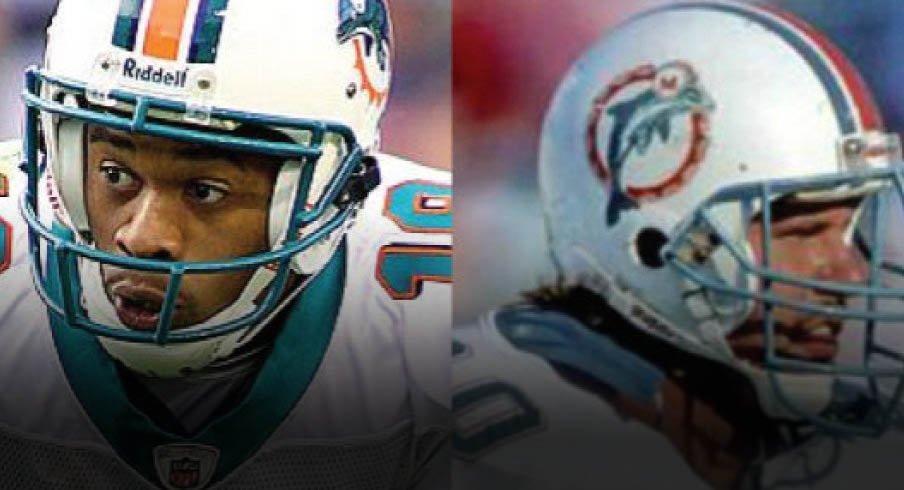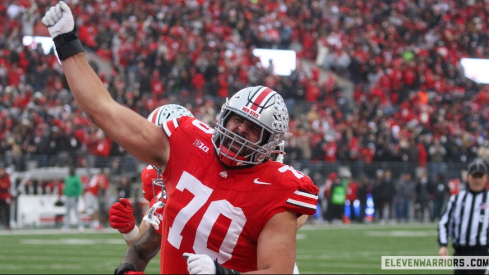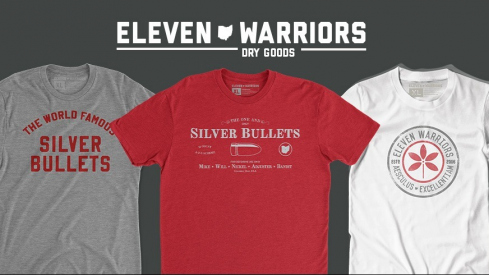Ohio State blows out Indiana, 38-15. Now, it's time to do the same to That Team Up North.
“With their first-round selection of the 1988 NFL Draft, the Miami Dolphins select…Ohio State linebacker…”
I remember my jaw dropping and my whole body going momentarily numb. It was happening. My favorite Buckeye of all time was about to become a member of my favorite NFL team. Chris Spielman was going to join John Offerdahl, Bob Brudzinski and John Bosa to boost Miami’s defense for the 1988 season. It was pure joy.
For about half a second.
“…Eric Kumerow.”
Wait…what?
The Dolphins had a chance to have the most dominant inside linebacking tandem in the NFL with Spielman/Offerdahl and instead they went with the tall, rangy former quarterback-turned-defensive end/outside linebacker. At that time, Eric Kumerow was an NFL tweener — not heavy enough to play defensive end and not fast enough to play linebacker.
I was 21 years old, had never been part of an NFL personnel department, and still I knew this.
I was very torn by the pick — absolutely no one had predicted Kumerow as a first round selection (as you might imagine, "draft expert" Mel Kiper had much to say about the Dolphins reaching for what should be a middle-round pick) — because, although I loved the guy as a Buckeye, he simply wasn’t the right fit for Miami. What was Don Shula doing?
No one, with the possible exception of Shula and the player himself, wanted Kumerow to succeed more than I did. After all, he had put together a great career at Ohio State. A three-year starter, Kumerow was a two-time all-conference selection and the Big Ten’s defensive lineman of the year in 1986. He racked up 23 career sacks and 39 tackles for loss in Columbus.
But I knew this would be an uphill battle for him.
Sure enough, the 16th overall pick of the 1988 draft flamed out of the league in just a few years. In three seasons in Miami, Kumerow didn’t start a game. Before being traded to Chicago for Vestee Jackson, Kumerow finished his Dolphins career with five sacks and an interception. He made only one tackle in 16 games in 1990, backing up Hugh Green at outside linebacker.
Some call him the biggest draft bust in Miami’s history.
It’s one thing to suffer through a wasted first round pick by your team. It’s about 10 times worse when that player is a beloved Buckeye. And it’s nearly unbearable when your team had the chance to scoop up Spielman but instead chose to do something that turned into one of its all-time worst draft day blunders.
It’s one thing to suffer through a wasted first round pick by your team. It’s about 10 times worse when that player is a beloved Buckeye.
Flash forward to 2007.
Between bands at a progressive rock festival in Phoenixville, Penn., I wandered into a bar to catch a little of the draft and to grab a beer — not necessarily in that order. As luck would have it, they were up to the eighth pick and my beloved Dolphins were coming up at No. 9. I got a Yuengling and parked in front of a TV.
All Dolphins fans wanted a quarterback, and the majority of us (and yes, I’ll freely cop to it) wanted Brady Quinn. Instead, the Miami selection was Ted Ginn Jr.
Wait...what?
To this day, I love Teddy Ballgame as much as any Buckeye fan, but I groaned at the pick despite all of his collegiate accomplishments.
With a glaring need at quarterback, it felt like the Dolphins had decided a kick and punt returner was worth the ninth overall selection. Most Miami fans were livid. And then-coach Cam Cameron didn’t endear Ginn to the fanbase by saying the Dolphins had drafted “the entire Ginn family.”
Once again, I decided to be cautiously optimistic. Maybe this would work out. I wanted Ginn to be great and now my team’s 2007 draft class depended on it. Perhaps he’d become a favorite target of second-round pick John Beck — the quarterback of the future! — and they’d dominate the league for years. [Pause for laughter]
The college game and the pro game simply aren’t the same. I saw deficiencies in Ginn that worried me, and that was backed up in the scouting reports I read. The concerns were that Ginn would struggle against press coverage, was a suspect route runner, and, while extremely fast, he lacked “quickness” to get in and out of breaks.
And those turned out to be his precise flaws.
Miami went 1-15 that fall. Ginn started nine games and caught 34 passes for 420 yards and two touchdowns — not terrible for a rookie receiver, but certainly not the impact you’d like from the No. 9 overall pick. Cameron was fired after the season.
Ginn put together two more average seasons with the Dolphins before being traded to San Francisco in April of 2010 for a fifth-round pick (Nolan Carroll). In 2008, he started a career high 14 games, finishing with 56 receptions for 790 yards and two scores. Ginn finished his Miami career making 12 starts in 2009, totaling 38 catches for 454 yards and a touchdown.
In fairness, Ginn did get open deep a lot for Miami and Dolphin quarterbacks (among them: Beck, Trent Green, Cleo Lemon, and Chad Henne) simply couldn’t get him the ball.
One thing Ginn did well for the Dolphins was return kicks and punts, although many Miami fans criticized his tendency to run out of bounds to avoid contact. He scored three return touchdowns for Miami and had a number of others called back on holding penalties.
Like Kumerow, Ginn flamed out of Miami after three years. Once again, here was a Buckeye first-round pick that was considered a bust selection by my Dolphins. Unlike Kumerow, at least he turned into a useful player. But he certainly did not live up to being a No. 9 overall selection.
So when you watch the draft tonight, keep in mind that having your team take a Buckeye can be a double-edged sword. You're golden if you get a Spielman, Orlando Pace or Joey Galloway. Not so much if you get a Kumerow or a Vern Gholston.
Enjoy the draft.
[Evil laugh]
[Is simultaneously giddy and terrified at the prospect of Miami drafting Ryan Shazier.]


